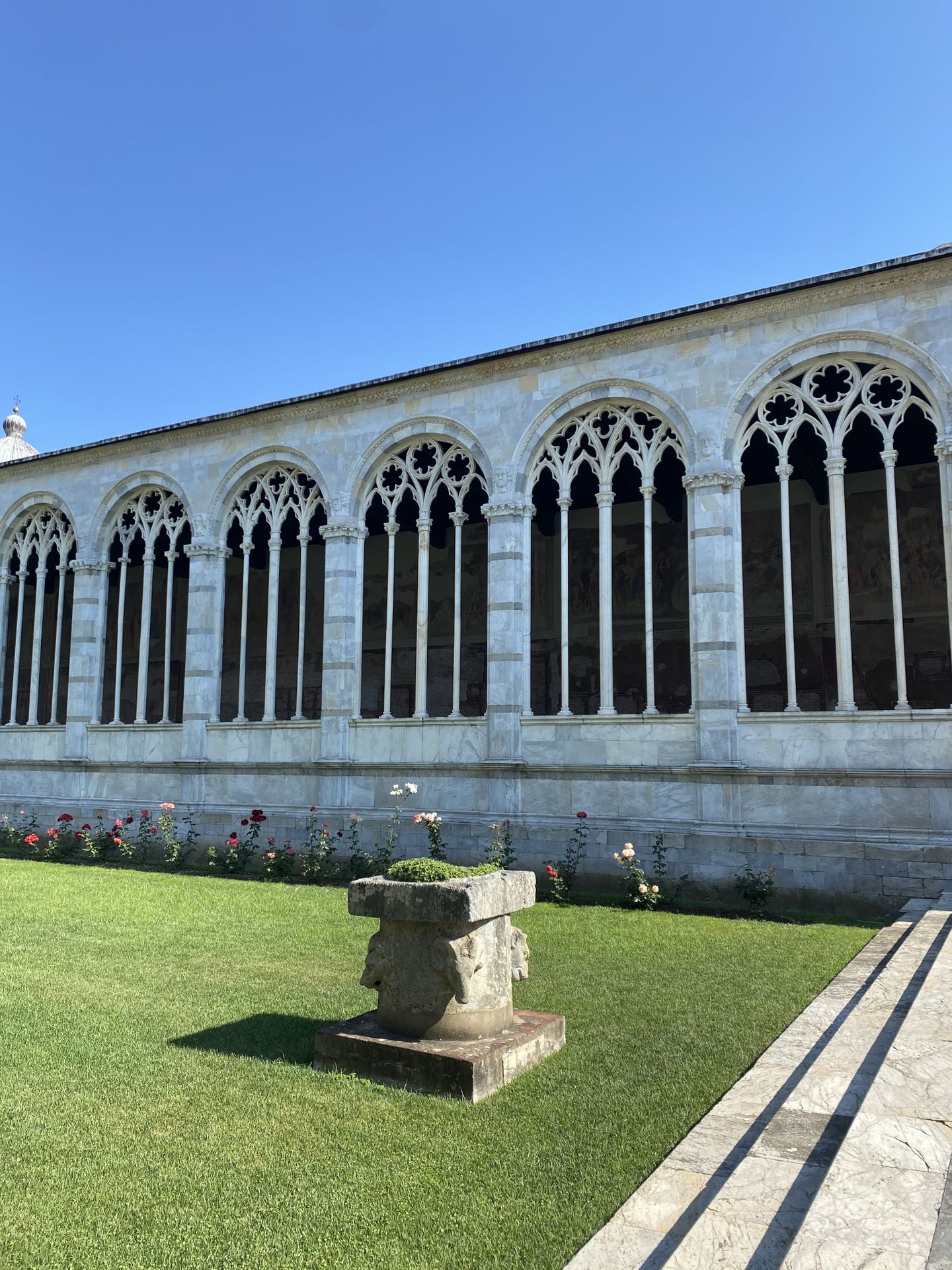Definite articles are used a little differently in Italian vs. English. Check out our post on how to use Italian definite and indefinite articles to learn more!

What are the in Italian?
Definite articles (“the” in English) → il, l',la, lo, i, le, and gli
Indefinite articles (“a” and “an” in English) → un, uno, un’, and una
Partitive articles (“some” or “any” in English) → del, dello, dell’, della, dei, degli, delle
As you can see, unlike the English ones, articles in Italian have many different forms. The form you use will depend on the and of the noun, as well as on the noun’s first letter.
In this post, we’ll introduce you to the forms of the different Italian articles and discuss when to use each form. We’ll also direct you to some resources you can use to learn about when and why you’ll use different articles in Italian. Read on to learn more!
What are the Italian definite articles?
The definite articles in Italian are il, l’, lo, i,gli , la, and le. These all translate to “the” in English.
Tip
Italian uses a different form for the definite article depending on whether the noun that follows it is masculine or feminine, singular and plural.
la casa → le case
the house (f.) → the houses (f.)
il banco → i banchi
the desk (m.) → the desks (m.)
But the form of the article is also affected by the first letter(s) of the word that come immediately after it. This word is often the noun itself, but can also be a modifier that precedes the noun. Look at the difference here:
l’amico(the friend)
il migliore amico(the best friend)
Let’s look first at the masculine definite articles, then the feminine ones.
Masculine definite articles in Italian
The masculine definite articles in Italian are il, l’, lo, i, and gli. Here are the rules for when you should use each one:
Singular Article | Plural Article | First letter(s) of the following word | Example |
|---|---|---|---|
il | i | before a (except those that use lo/gli below) | il treno → i treni the train → the trains |
l’ | gli | before a | l’amico → gli amici the friend → the friends |
before h | l’hotel → gli hotel the hotel → the hotels | ||
lo | gli | before s + consonant | lo studente → gli studenti the student → the students |
before z | lo zero → gli zeri the zero → the zeros | ||
before gn | lo gnomo → gli gnomi the gnome → the gnomes | ||
before ps | lo psicologo → gli psicologi the psychologist → the psychologists | ||
before y | lo yogurt → gli yogurt the yogurt → the yogurts | ||
before x | lo xilofono → gli xilofoni the xylophone → the xylophones | ||
before pn | lo pneumatico → gli pneumatici the tire → the tires | ||
before i + vowel | lo iato → gli iati the hiatus → the hiatuses |
Exception!
The singular masculine noun il dio(the god) takes gli in the plural, even though it starts with “d.”
✅ gli dei (the gods)
❌ dei
Why? The word dei comes from the old Italian word iddei. Because iddei was a plural masculine noun beginning with a vowel, it took the plural masculine definite article gli. When the old Italian word iddei changed into standard Italian dei, it maintained the old articles gli/degli!
Tip
Some of the groups above that take lo/gli are quite small. Check out our table of Italian nouns with articles to see just how small the number of nouns that take lo/gli actually is!
Feminine definite articles in Italian
The feminine definite articles in Italian are: la, l’, and le. Here’s when to use each one:
Singular Article | Plural Article | First letter(s) of the following word | Example |
|---|---|---|---|
la | le | before a consonant | la borsa → le borse the bag → the bags |
before i + vowel | la iena → le iene the hyena → the hyenas | ||
l’ | le | before a vowel | l’ora → le ore the hour → the hours |
Tip
Did you notice that, when singular words of either gender start with a vowel or h: lo and la drop their vowel and are written with an apostrophe? For example,
✅ l’aria(the air) ❌ la aria
✅ l’olio (the olive oil)❌ il/lo olio
✅ l’hotel (the hotel)❌ il/lo hotel
Why is this? It’s simply to facilitate pronunciation and avoid having two vowel sounds together! In fact when you use an apostrophe the two words are linked together and are pronounced as a single word.
Proof of the musicality of Italian!
What are the Italian indefinite articles?
The indefinite articles in Italian are un, uno, una, un’. All of these roughly translate to “a/an” in English.
Tip
Indefinite articles are used a little differently in Italian vs. English. Have a look at our post on how to use Italian definite and indefinite articles to learn more.
Indefinite articles are only used with singular nouns, but as we saw with definite articles above, the form you use will depend on the gender of the noun and on the first letter(s) of the following word.
Let’s start with masculine indefinite articles, and then turn to the feminine ones.
Masculine indefinite articles in Italian
The masculine indefinite articles in Italian are un and uno. Here’s when to use each one.
Article | First letter(s) of the following word | Example |
|---|---|---|
un | before a consonant | un telefono a telephone |
before a vowel | un orologio a watch | |
before h | un hotel a hotel | |
uno | before s + consonant | uno studente a student |
before z | uno zaino a backpack | |
before gn | uno gnomo a gnome | |
before ps | uno psichiatra a psychiatrist | |
before y | uno yeti a yeti | |
before x | uno xilofono a xylophone | |
before pn | uno pneumologo a pulmonologist | |
before i + vowel | uno iettatore a jinx |
Tip
Notice that there is no apostrophe between un and a vowel or un and an h! They are separate words!
Feminine indefinite articles in Italian
The feminine indefinite articles in Italian are una and un’. Here’s when to use each one:
Article | First letter(s) of the following word | Example |
|---|---|---|
una | before a consonant | una ragazza a girl |
before i + vowel | una iena a hyena | |
un’ | before a vowel | un’amaca a hammock |
Tip
Notice the difference in masculine and feminine before vowels! We say un amico(a friend (m.)) with two words but un’amica(a friend (f.)) as one word!
What are the Italian partitive articles?
The Italian partitive articles are del, dello, dell’, della, dell’, dei, degli, and delle. These all translate to “some/any” and they are a combination of the di(of) with a definite article (il, lo, l’, la, and i, gli, le(the)).
When should you use them?
Before a singular noun, they tell your listener that you’re talking about part of a whole food or substance. Use the singular to translate phrases like: “some cake” or “some water.”
Before a plural noun, they tell your listener that you’re talking about an undetermined quantity of something, and can be used as plural indefinite articles. Use the plural to translate phrases like “some pens”
Tip
You can learn a lot more about when to use partitive articles from our post on how to use Italian partitive articles!
The form of the partitive article will depend on which definite article you would use with a given noun, so you’ll need to look at the gender and number of the noun, as well as the first letter(s) of the word that immediately follows the article.
Let’s look at the singular partitive articles first, and then the plural ones.
Singular partitive articles in Italian
The singular partitive articles in Italian are del, dell’, dello, and della. The form you use will depend entirely on the form of the definite article that ought to precede a given singular noun.
di + il → del
il succo → del succo
the juice → some juice
di + lo → dello
lo yogurt → dello yogurt
the yogurt → some yogurt
di + l’ → dell’
l’agilo → dell’agilo
the garlic → some garlic
di + la → della
la yucca → della yucca
the yucca → some yucca
For the full rules, check out the table below!
Plural partitive articles in Italian
The plural partitive articles in Italian are dei, degli, and delle. The form you use will depend entirely on the form of the definite article that ought to precede a given plural noun.
di+i→ dei
i pianeti → dei pianeti
the planet → some plane
di+le→ delle
le amiche → delle amiche
the friends → some friends
di+gli→ degli
gli gnocchi → degli gnocchi
the dumplings → some dumplings
Tip
Remember how dei(gods) took gli as its plural definite article, even though it starts with “d?” It also takes gli as its partitive article, because the partitive article is just de + the definite article!
✅ degli dei (some gods)
❌ dei dei
For the full rules, have a look at the table in the next section.
More examples of partitive articles in Italian
The tables below show more examples of partitive articles, along with the full rules for choosing the partitive article to use before different masculine and feminine nouns in Italian.
Masculine partitive articles in Italian | |||
|---|---|---|---|
Singular Partitive Article | Plural Partitive Article | First letter(s) of the following word | Examples |
del di + il/i | dei di + i | before (most) consonants | del succo some juice dei pianeti some planets |
dell’ di + l’ | degli di + gli | before (most) vowels | dell’aglio some garlic degli orologi some watches |
dello(di + lo) di + lo | degli di + gli | before s + consonant | dello speck some smoked ham degli scolari some pupils |
before z | dello zinco some zinc degli zeri some zeros | ||
before gn | dello gnocco some dumpling degli gnocchi some dumplings | ||
before y | dello yogurt some yogurt degli yacht some yachts | ||
before x | dello xilema some xylem degli xilofoni some xylophones | ||
before i + vowel | dello iodio some iodine degli ioni some ions | ||
Feminine partitive articles in Italian | |||
|---|---|---|---|
Singular Partitive Article | Plural Partitive Article | First letter(s) of the following word | Examples |
della di + la | delle di + le | before (most) consonants | della yucca some yucca delle borse some bags |
before i + vowel | della iuta some jute delle iene some hyenas | ||
dell’ di + l’ | degli di + le | before a vowel | dell’arancia some orange delle amiche some friends |
Summary
In conclusion, for each type of article, definite, indefinite, and partitive, let’s keep in mind that there are three questions you need to ask yourself to help you decide which article to use in Italian:
Is the noun they precede masculine or feminine?
Is it singular or plural?
Does the word they precede begin with a consonant, a vowel, an h, with s + another consonant, z, gn, pn, ps, x, y, or i + vowel?
Now it is time to practice with our exercises! Proviamo!(Let’s try!)
